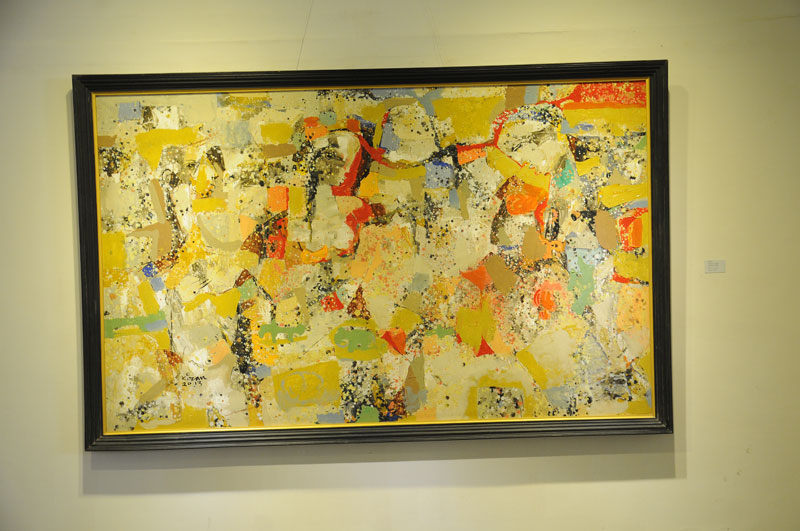Contrasting explorations
Kathmandu
In the lobby of the first floor of the Nepal Art Council, Babermahal one encounters drawings of hen, women, men, peacock, among others — black on the white walls — which radiate a happy feeling in the person who views it.
This is the introduction the exhibition of the father-son duo — eminent artist Kiran Manandhar and Sagar. They have exhibited their work under individual titles ‘Dunuga ya Swapu’ in Nepal Bhasa meaning ‘Feelings and Connection’ by Kiran, and ‘Bhairav’ by Sagar.
Bold and vibrant colours on huge canvases welcome you into the gallery. Like the title of his exhibition, Kiran has explored his feelings and emotions that have been evoked through his life experiences. In his paintings, one can see various aspect of life — love, festivity, sadness, anger and much more.
He has used man, woman and nature as his major motifs. He has used contrasting colours to create a strong and edgy effect in his paintings. And in most he has used hues like red, yellow, green, white, black, orange, purple, blue, brown.
About the use of many colours in one painting Kiran shared, “I like to eat a variety of food in big portions; small servings do not satisfy me.
Similarly, I like to have many colours in my paintings and that is why my canvases are big in size.”
In one of his paintings, he has shown a man and woman making love — they are kissing. He has painted the woman in white, man in grey against a black background. Then the use of red and blue coloured square and rectangular patches near them help the viewers to focus on their action.
However, Sagar’s paintings have subtle looks and there is a controlled rhythm in the use of colours. He has used broad and narrow stripes of monochromatic and multiple colours in his paintings. He is influenced by the deity Bhairab and has used colours like black, red, orange, blue, yellow, et cetera that symbolise Bhairab.
In the exhibition, there is also an installation using rato mato (a kind of mud used in mud houses and also for religious purposes), coal, red vermilion powder and incense.
The rato mato has been smeared evenly on the floor in a circular way. Then a heap of coal is placed within the circle and on the top of the heap red vermilion powder has been placed. According to Sagar, the installation is inspired by Lord Bhairab and he has used similar colours in most of his paintings that too are inspired by the same deity.
It is said, under a huge tree, another tree does not grow. But the exhibition of this father-son duo proves it wrong. They have their own unique styles while dealing with the themes and the colours for their painting.
The exhibition, that began on November 24, continues till December 7.






